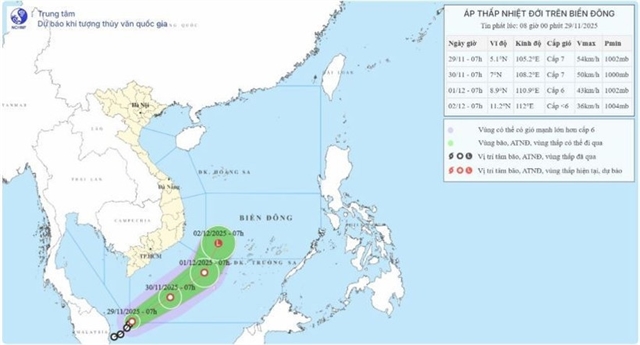 Life & Style
Life & Style


|
| An ichthyosaur specimen with its stomach contents visible as a block that extrudes from its body is displayed near the entrance of the Xingyi Geopark Museum in Wusha District, Xingyi City, Guizhou Province, China. — AFP/VNA Photo |
WASHINGTON — A giant, dolphin-like marine reptile was probably a megapredator, scientists said on Thursday after studying the fossilised remains of one for a decade.
How did they reach this conclusion? They discovered the skeleton of a second, almost as large, lizard-like aquatic reptile known as a thalattosaur in the ichthyosaur's stomach.
A paper describing the finding was published in the journal iScience, capping a journey that began in 2010 when paleontologists digging in a quarry in southwestern China made the rare discovery.
While the researchers can't know for certain whether the four-metre long thalattosaur was hunted or scavenged by the five-meter long ichthyosaur, certain signs suggest it met a violent end.
"There are no signs of rotting of the prey – if it was a rotten carcass, you would not expect to see the fingers still attached to the body," co-author Ryosuke Motani, a paleobiologist at the University of California, Davis said.
The thalattosaur's disconnected tail was found many metres away, leading the team to believe it was ripped off and left behind by the ichthyosaur.
The ichthyosaur's stomach contents didn't show signs of advanced digestion by acid, so it likely perished itself soon after its final meal.
"At first, we just didn't believe it, but after spending several years visiting the dig site and looking at the same specimens, we finally were able to swallow what we were seeing," added Motani.
Because finding stomach contents in marine fossils is so rare, scientists generally rely on tooth and jaw shapes to discern what they may have eaten.
Ancient apex predators are typically thought to have large, very sharp teeth – even though some modern predators like crocodiles use blunt teeth to consume large prey using force instead of cutting.
Ichthyosaurs have blunt teeth, but because there was no direct evidence of large prey consumption, researchers previously thought they fed on small prey like cephalopods. This would make them predators, but not megapredators.
"Now, we can seriously consider that (Ichthyosaurs) were eating big animals, even when they had grasping teeth," added Motani.
These events took place sometime after the end of the Permian era, some 250 million years ago, when land vertebrates started moving back to the sea following a mass extinction event.
The fact that predators arose shortly afterwards in the Middle Triassic period was a sign that ecosystems were bouncing back, said Motani. — AFP




